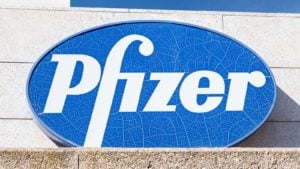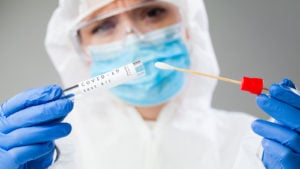
Healthcare stocks can include a wide range of industries and companies. While there’s real money to be made here, the sector is also full of quicksand just waiting to pull you and your wallet into the ground.
The sector includes pharmaceuticals, biotech, medical device companies, health insurers and healthcare facilities. You also have specialized healthcare IT companies, health service companies, pharmacies and diagnostic laboratories making up a serious number of healthcare stocks.
While the space is broad, so is the competition. Investing in healthcare often means trying to get in on the ground floor of a company poised to spend year developing to a new drug, treatment or piece of equipment that could change the industry.
For investors who choose healthcare stocks wisely, the profits can be spectacular. And for investors who choose poorly, the losses can be dramatic.
So, investing in healthcare stocks isn’t for everyone. But if you’re looking to enter the sector, the Portfolio Grader can point out some names to avoid.
Relmada Therapeutics (RLMD)

Relmada Therapeutics (NASDAQ:RLMD) is a pharmaceutical company in Florida working on treating disorders of the central nervous system.
Its central work involves a Phase 3 trial of a drug to treat major depressive disorder. Testing will continue through at least next year.
That means that Relmada is putting a lot of money into research but won’t have anything to show for it for a long time.
First-quarter earnings showed research and development expenses of $15.9 million and general expenses of $12.3 million. The company recorded a total loss of $26.3 million for the quarter or 87 cents per share.
I’m not saying that Relmada will fail. Perhaps its drug will work, and the Phase 3 trials will be a big success. But if you’re counting on something to help your portfolio this year, Relmada isn’t one to pick.
This penny stock is down 29% this year and gets a “D” rating in the Portfolio Grader.
Ginkgo Bioworks (DNA)

Ginkgo Bioworks (NYSE:DNA) is a biotech company headquartered in Boston. The company envisions using biology and cell programming to make advancements in pharmaceuticals, agriculture, industrial and specialty chemicals. The idea is to help companies make improved bio-engineered products.
But that’s an expensive proposition. Gingko brought in $477.7 million in revenue last year, but the net loss was more than $2.1 billion because of its massive R&D costs.
Revenue is projected this year to drop to $275 million because of a drop in demand for Covid-19 testing products and services.
It could be years before Ginkgo Bioworks is ready to turn a profit. This definitely is one of the healthcare stocks to avoid, at least for now. DNA stock has a “D” rating in the Portfolio Grader.
ViewRay (VRAYQ)

ViewRay (OTCMKTS:VRAYQ) is a medical device company that makes MRIdian, an MRI-guided radiation therapy system designed to image and treat cancer in patients simultaneously.
Unfortunately, that’s about the only good thing you can say about ViewRay. It has great intentions as a company, but as a stock, you can find far better. ViewRay likely won’t be around much longer.
Until July 2023, ViewRay traded on the Nasdaq composite under the ticker VRAY, but it filed for Chapter 11 bankruptcy and announced its plans to sell the business and its assets.
Trading was suspended on July 26, and while the new listing isn’t available yet on the OTC market, it’s expected to be there soon.
Not surprisingly, ViewRay warrants an “F” rating in the Portfolio Grader.
Moderna (MRNA)

Moderna (NASDAQ:MRNA) zoomed into the general public’s awareness during the Covid-19 pandemic.
Its mRNA vaccine was approved in the U.S. and many other countries. Its Covid-19 vaccine brought in about $36 billion over the last two years.
But the Covid vaccine and boosters market has fallen tremendously, and so has MRNA stock. Moderna recorded a first-quarter profit only because of deferred coronavirus vaccine orders, but that will not continue.
Moderna will instead have to continue to market the drug – most likely in Japan and Europe – to replace some sales it will no longer get in the U.S.
MRNA stock is down more than 70% from its all-time high in 2021 and dropped 34% just this year. It gets a “D” rating in the Portfolio Grader.
Pfizer (PFE)

Based on the Moderna entry, you probably won’t be surprised that the other major coronavirus vaccine maker in the U.S. is also struggling. Pfizer (NYSE:PFE) stock is down 30% this year.
First-quarter revenues of $18.28 billion were down 28% from a year ago.
Of course, Pfizer is a big company that does much more than just Covid-19 treatments. But it took a blow in June when it was forced to end the clinical development of lotiglipron as a potential treatment for obesity and Type 2 diabetes.
Medical treatments for obesity are incredibly popular right now, and if Pfizer had managed to capture a share, it would have a shot of replacing its Covid-19 profits. For a short-term trader, PFE stock is a bad bet right now. It gets an “F” rating in the Portfolio Grader.
Ainos (AIMD)

Ainos (NASDAQ:AIMD) is a biotech company based in Texas that has its hands in pharmaceuticals and medical devices.
It focuses on identifying volatile organic compounds (VOCs) emitted by breath, sweat and bodily secretions and studying them to identify disease, drug efficacity or genetic issues.
While the technology and the potential uses are fascinating, the financial performance leaves much to be desired. First-quarter results included revenue of $49.1 million, compared to $87.2 million a year ago.
Company officials attributed the drop to a slowdown in Covid-19 infections. Ainos had been marketing Covid-19 antigen rapid test kits. The company recorded a loss of $100.8 million for the quarter, compared to $41 million a year ago. The EPS loss was $2.52 per share.
Ainos stock trades for less than $1 per share, and while the company hasn’t gotten a delisting notice, it will be necessary for shares to regain traction. AIMD stock is down 54% this year and has a “D” rating in the Portfolio Grader.
Iovance Biotherapeutics (IOVA)

Iovance Biotherapeutics (NASDAQ:IOVA) is a biotech company dedicated to cancer treatments. It’s focused on creating patient-specific tumor-infiltrating lymphocytes to recognize and target cancer cells.
It also operates a cell therapy center in Philadelphia which is among the largest of its kind.
However, the stock is down around 12% in the last several weeks as Iovance has taken steps to dilute shareholder value. In July, the company announced it would sell 20 million shares of stock at $7.50 to raise $150 million.
As the sale price was more than a 10% discount from the stock price, IOVA stock fell accordingly.
Iovance hopes to use the stock sale to launch its lead therapy candidate, Lifileucel, if federal regulators approve it.
For now, IOVA stock is a pass. It gets a “D” rating on the Portfolio Grader.
On the date of publication, neither Louis Navellier nor the InvestorPlace Research Staff member primarily responsible for this article held (either directly or indirectly) any positions in the securities mentioned in this article.






